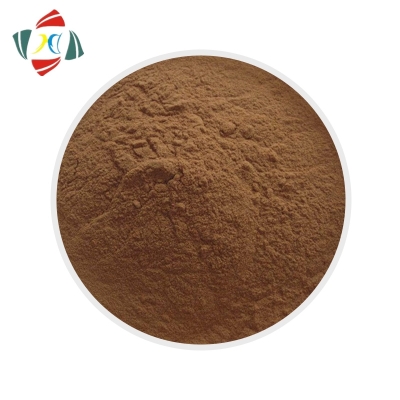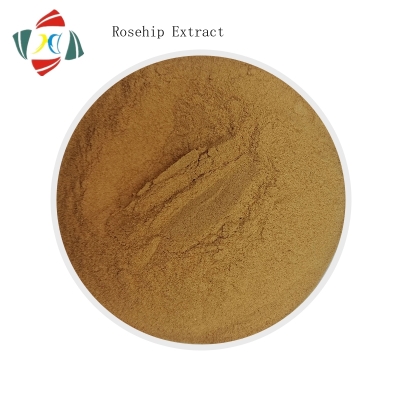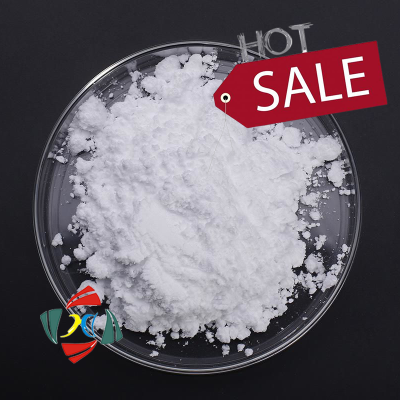-
Categories
-
Pharmaceutical Intermediates
-
Active Pharmaceutical Ingredients
-
Food Additives
- Industrial Coatings
- Agrochemicals
- Dyes and Pigments
- Surfactant
- Flavors and Fragrances
- Chemical Reagents
- Catalyst and Auxiliary
- Natural Products
- Inorganic Chemistry
-
Organic Chemistry
-
Biochemical Engineering
- Analytical Chemistry
- Cosmetic Ingredient
-
Pharmaceutical Intermediates
Promotion
ECHEMI Mall
Wholesale
Weekly Price
Exhibition
News
-
Trade Service
*Only for medical professionals to read and refer to vitamin D, calcitriol, alfacalcidol, etc.
, it is important to
grasp the difference!
Commonly used vitamin D and analogues are: vitamin D 2, vitamin D3, calcifediol, calcitriol, alfalciferol, paricalcitol, calcipotriol, etc
。 What is the difference between these seven vitamin D similar drugs?
First, the difference
between vitamin D2 and D 3 Vitamins D2 and D3, collectively known as vitamin D
.
Adults, in summer, the whole body skin, exposed to sunlight for 10 minutes, can produce about 10,000 U of vitamin D3
.
In regulating bone calcium metabolism, the activity of vitamin D3 is 2~4 times
that of vitamin D2.
The chemical structure
calcifediol is the main form of vitamin D in the blood, with a long half-life (12~20 days), which is an objective indicator
reflecting whether vitamin D is deficient.
Vitamin D has a long half-life (23~38 days), when the dose is large, it can accumulate in human adipose tissue, and it takes longer (2 weeks ~ 4 months) to fail after stopping the drug, and it is necessary to be alert to the risk of
hypercalcemia.
Pharmacological activity Calcitriol
can directly bind to vitamin D receptors, promote intestinal absorption of calcium, and regulate bone mineralization, which itself has biological activity
。
Paricalcitol, Idecalcidol, and Calcipotriol are derivatives of synthetic calcitriol and are active
in themselves.
Vitamin D3, calcifediol, alfacalcidol, itself inactive, need to be converted into calcitriol to have biological activity
.
The Image Source Drug Evaluation Center
remembers: vitamin D needs liver and kidney activation; Alfacalcidol requires liver activation, not kidney activation; Calcifediol requires kidney activation, not liver activation
.
Fourth, indications and dosage
Long-term excessive oral vitamin D can cause hypercalcemia
.
Where to see more rheumatology clinical knowledge? Come to the "Doctor Station" to take a look 👇
at the source of this articleDrug Evaluation Center Responsible EditorCassette
.
More than 9,000 rheumatologists from 104 countries arrived and more than 4,300 rheumatologists gave online lectures, covering more than 30 Hot topic, showcasing high-quality research
in rheumatology.
The interpretation of this live broadcast includes:
.
.
.
.
.
At 7 p.
m.
on November 30, Professor Wang Li of Peking Union Medical College Hospital and Professor Zhu Xiaoxia of Huashan Hospital affiliated to Fudan University brought the hot topic of Sjogren's syndrome
, it is important to
grasp the difference!
Commonly used vitamin D and analogues are: vitamin D 2, vitamin D3, calcifediol, calcitriol, alfalciferol, paricalcitol, calcipotriol, etc
。 What is the difference between these seven vitamin D similar drugs?
First, the difference
between vitamin D2 and D 3 Vitamins D2 and D3, collectively known as vitamin D
.
Adults, in summer, the whole body skin, exposed to sunlight for 10 minutes, can produce about 10,000 U of vitamin D3
.
In regulating bone calcium metabolism, the activity of vitamin D3 is 2~4 times
that of vitamin D2.
Nutritional vitamin D intake recommendations (for reference only):
The chemical structure
calcifediol is the main form of vitamin D in the blood, with a long half-life (12~20 days), which is an objective indicator
reflecting whether vitamin D is deficient.
Vitamin D has a long half-life (23~38 days), when the dose is large, it can accumulate in human adipose tissue, and it takes longer (2 weeks ~ 4 months) to fail after stopping the drug, and it is necessary to be alert to the risk of
hypercalcemia.
Pharmacological activity Calcitriol
can directly bind to vitamin D receptors, promote intestinal absorption of calcium, and regulate bone mineralization, which itself has biological activity
。
Paricalcitol, Idecalcidol, and Calcipotriol are derivatives of synthetic calcitriol and are active
in themselves.
Vitamin D3, calcifediol, alfacalcidol, itself inactive, need to be converted into calcitriol to have biological activity
.
The Image Source Drug Evaluation Center
remembers: vitamin D needs liver and kidney activation; Alfacalcidol requires liver activation, not kidney activation; Calcifediol requires kidney activation, not liver activation
.
Fourth, indications and dosage
Long-term excessive oral vitamin D can cause hypercalcemia
.
A moderate degree of hypercalcemia will completely inhibit the growth and development of children for more than 6 months, and the effect on height is difficult to completely correct.
Calcitriol and the like cause hypercalcemia risk is greater than vitamin D
.
1.
Rickets
Prevention of rickets: oral vitamin D (400U~800U/day) is preferred;
Treatment of rickets: oral vitamin D (1000U/day), or calcifediol (50~100μg/day).
2.
Osteoporosis
Prevention of osteoporosis: vitamin D (600~1000U/day);
Treatment of osteoporosis: Vitamin D or calcifediol
may be used.
——For patients older than 65 years old or with reduced renal function, oral calcitriol (0.
25~0.
5μg/day) or alfacalcidol (0.
25~1.
0μg/day)
are recommended.
3.
Metabolic rickets and osteomalacia
In patients with chronic kidney disease, decreased activity of 1α-hydroxylase and decreased renal synthesis of calcitriol, can cause osteomalacia and renal osteodystrophy
.
Calcitriol is preferred, 0.
25~0.
5μg each time, 1~2 times a day; or alfacalcidol, 0.
5 μg once
daily.
4.
Hypoparathyroidism
Calcitriol is preferred, starting with 0.
25 micrograms daily in the morning
.
5.
Secondary hyperparathyroidism in patients with chronic renal failure undergoing hemodialysis
Paricalcitol can inhibit the synthesis and secretion of parathyroid hormone by binding to vitamin D receptors, and has little
effect on blood calcium and phosphorus.
0.
04~0.
1μg, single injection, administered at any time during dialysis
.
6.
Treatment of psoriasis
Calcipotriene, topical application can directly bind to vitamin D receptors in skin cells, inhibit the proliferation of psoriasis skin lesions, etc
.
Calcipotrienel is used topically, about 1%-5% can be absorbed
through the skin.
Exceeding the recommended dosage may result in elevated
serum calcium.
Where to see more rheumatology clinical knowledge? Come to the "Doctor Station" to take a look 👇
at the source of this articleDrug Evaluation Center Responsible EditorCassette
Copyright Notice
This article is reprinted Welcome to forward the circle of friends
- End -2022 ACR Conference has been successfully concluded in Philadelphia, Pennsylvania, USA from November 10-14.
More than 9,000 rheumatologists from 104 countries arrived and more than 4,300 rheumatologists gave online lectures, covering more than 30 Hot topic, showcasing high-quality research
in rheumatology.
This time, the Youth Committee of the Rheumatology Society takes you to see ACR
Initiated by the "Medical Community" media
Professor Zhao Jiuliang of Peking Union Medical College Hospital took the lead
10 youth committee members of the Rheumatology Branch of the Chinese Medical Association were invited
In-depth analysis of the essence of the conference
The content covers a wide range of disease areas
Includes the latest disease progression
Hot topics and other content forms
to convey the strongest sound in the field of rheumatology
Create a new academic style
The interpretation of this live broadcast includes:
Should subclinical patients be treated with DMARDs?
What are the health effects of refractory RA?
Diagnosis and treatment of cutaneous lupus erythematosus
Recent advances in the treatment of lupus nephritis
Standard-of-standard treatment for ankylosing spondylitis
How to differentiate between vasculitis and vascular lesions from discoloration of hands and feet?
Recent advances in imaging and treatment of Sjogren syndrome
..
.
.
.
.
At 7 p.
m.
on November 30, Professor Wang Li of Peking Union Medical College Hospital and Professor Zhu Xiaoxia of Huashan Hospital affiliated to Fudan University brought the hot topic of Sjogren's syndrome
Scan the QR code below the poster to watch the live broadcast
The "medical community" strives to publish content professional and reliable, but does not make any commitment to the accuracy of the content; Relevant parties are requested to check
separately when adopting or using it as a basis for decision-making.







